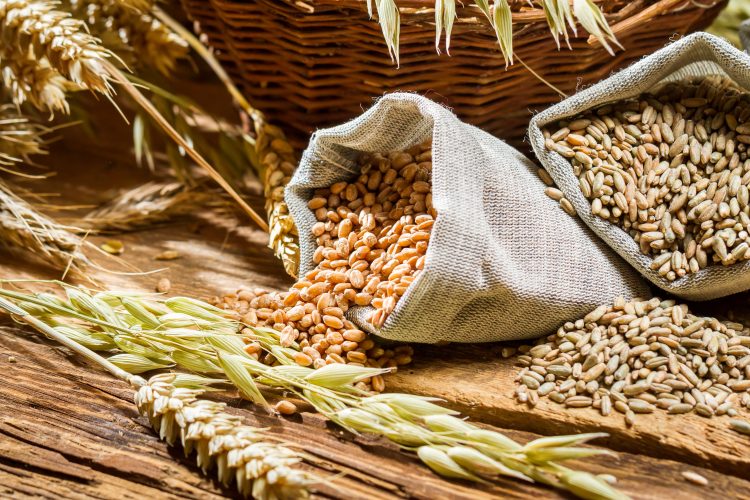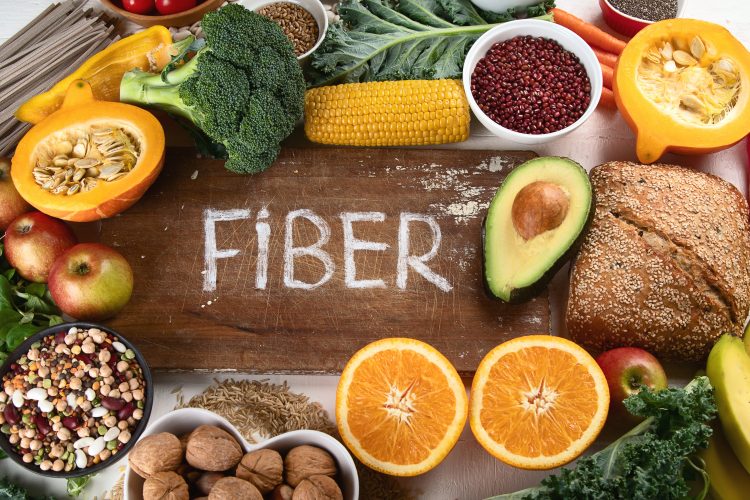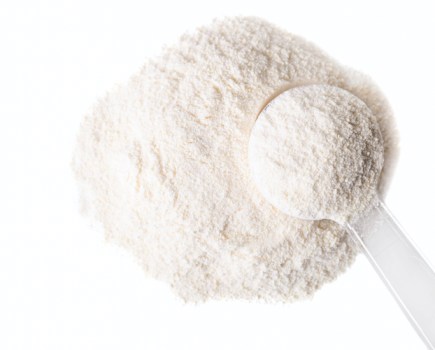Everything you need to know about the benefits of fiber, and how to include more of this vital macronutrient in your diet.
We often focus on the best supplements for muscle growth, but it’s important to also look after the rest of your body too – including your digestive system. That’s where fiber comes in. Roughage, bulk, the stuff that ‘keeps you regular’. However you describe fiber, it’s one F-word you should be using every day. Fiber has many benefits, from helping to maintain a healthy digestive system to reducing the risk of cancer and heart disease.
This often-overlooked macronutrient – which receives far less attention than the big-hitting proteins, carbs, and fats of this world – is found in plant-based foods. In fact, it’s the part of the plant that doesn’t get digested in your small intestine.
“Instead, fiber makes its way to the large intestine or colon,” explains Rob Hobson, head of nutrition at Healthspan. He adds that foods such as oats, peas, potatoes, beans, vegetables, nuts and seeds are all rich sources.
Hobson says that different fibers do different things. “Some swell to help the transit of waste through the gut. Others can act as prebiotics helping gut bacteria to flourish. And some have other benefits such as binding with cholesterol to help remove it from the body.”
Eli Brecher, nutritionist and founder of Eli Brecher Nutrition, explains that to maximise the health benefits of fiber we should be aiming for around 30 to 40g every day. The average intake in the UK, however, is around the 18g mark. That’s despite the fact it’s not too hard to hit the recommended fiber figure.
For context, one medium apple contains over 4g of fiber, a medium-sized baked potato contains a further 4g, and 100g of boiled lentils contains 8g of the good stuff.
Difference between soluble and insoluble fibre
Fiber adds ‘bulk’ to your diet. That might not sound too sexy – or particularly beneficial – but hear us out. “Fiber is classified into two groups: soluble and insoluble,” says Hobson. Soluble fiber dissolves in water, while insoluble fiber doesn’t.
“Often both occur in fiber-rich foods – most plants contain both fibers,” continues Hobson. “That’s why the distinctions are not really made between the two any more.

“Foods high in soluble fibers include oats, barley, rye, beans, lentils, bananas, pears, apples, carrots, potatoes and golden linseeds. They are made from the parts of plants that absorb water, such as cell walls and gums. They hydrate your intestines to make stools soft – which can help prevent constipation.”
Insoluble fiber, on the other hand – found in wheat bran, dried fruit, corn, wholegrain cereals, wholegrain bread, nuts and seeds – is the type of fiber that’s often referred to as ‘roughage’.
“It passes through the gut without being broken down,” explains Hobson. “And helps with digestive transit, by providing bulk and stool size.” Alonside fiber-rich foods, you can also get your daily dose via the best fiber supplements.
Benefits of fiber: helping gut bacteria flourish
The gut microbiome, containing billions of tiny organisms such as various bacteria, is hugely beneficial to good health.
“Certain fibers are non-digestible,” says Hobson, “and found in foods such as bananas, onions, garlic, Jerusalem artichokes, apple skin, chicory root and beans. These fibers act as prebiotics, as they pass through the small intestine undigested and ferment on the way to the large colon.
This fermentation process ‘feeds’ beneficial bacteria colonies and helps to increase the number of good bacteria in your gut.”
A microbiome filled with diverse and healthful bacteria will help with weight management, as well as the reduction of various diseases (according to the British Medical Journal).
Benefits of fiber: balancing blood glucose levels
Keeping blood sugar levels balanced – avoiding a rollercoaster of energy peaks and troughs throughout the day – is not only important to help you maintain a constant flow of energy and a calmer peace of mind, but also for managing a healthy weight.
“Overeating quickly digested carbohydrate foods – such as sugar, white pasta, white bread and white rice – can lead to recurrent spikes and troughs in blood sugar levels,” says Hobson. “Over time, that can increase your chances of becoming overweight. And that’s a risk factor for type 2 diabetes, among many other diseases.”
A fiber-rich diet can counteract these energy highs and lows. “Soluble fiber helps to slow down the passage of food through the digestive system, giving digestive hormones more time to act,” says Hobson. “This fiber also forms a gel with water that prevents carbohydrates from being so quickly absorbed by the small intestine.
“In a large meta-analysis of 24 prospective cohort studies, researchers concluded that people who consumed lower-glycemic load diets were at a lower risk of developing type 2 diabetes than those who ate a diet of higher-glycemic load foods.”
Essentially, the glycemic load of a food estimates by how much that food will raise a person’s blood sugar. Hobson explains that there’s research to show how a high glycemic index meal left people hungrier, with higher blood sugar and more cravings.
Benefits of fiber: protecting your heart
In the UK, one in eight men die from coronary heart disease, according to the British Heart Foundation. So there’s no time like the present to implement some heart-friendly dietary changes.
“Studies have shown that eating a diet high in fiber is associated with a lower risk of death from conditions such as heart disease, and one in particular concluded that there was a 10% reduction in disease risk for every 10g increase in fiber per day,” reveals Hobson.

“Soluble fiber has been proven to help lower LDL (bad) cholesterol, a risk factor for heart disease. The type of fibers that have this effect on cholesterol are called beta-glucans, and can be found in oats and barley. These swell in the gut to form a thick gel. It binds to excess cholesterol and cholesterol-like substances to prevent their absorption and remove them from the body as waste.”
Benefits of fiber: decreasing the risk of cancer
“Colorectal cancer is one of the most common cancers in the UK,” says Hobson. He adds that The World Cancer Research Fund (WCRF) has estimated that 45% of colorectal cancer could be prevented through diet, physical activity and maintaining a healthy weight.
In fact, there’s pretty strong evidence to show that wholegrains could play a big part in protecting against colorectal cancer.
“Wholegrain foods include rye, barley, oats, brown rice and wholewheat bread,” says Hobson. “They’re a rich source of dietary fiber, which may reduce colorectal cancer risk through the gut bacteria’s synthesis of short-chain fatty acids, reduced food transit time through the gut, or by the prevention of insulin resistance.
“While no food alone is going to prevent you from getting colorectal cancer, the most up to date research has shown that eating three servings per day of wholegrains reduces the risk by 17%.”
Can you eat too much fiber?
Like with all the best things in life, if your fiber intake isn’t quite hitting the mark, it’s best to take things slow. Brecher explains that a sudden switch to a high-fiber diet may lead to unwanted digestive symptoms, such as bloating, gas and constipation.
“To avoid any of those, build up gradually over a period of a few weeks, to allow your body the time to adjust. It’s also important to drink plenty of water when increasing your fiber intake, which will help promote a smooth digestive process.”
“Some people have a naturally higher tolerance for more fibers, while others may be more sensitive to too much,” says Brecher. “If you do overdo it with fiber, remember to increase your fluid intake to compensate, as well as doing some light physical activity such as walking and stretching, which can help relieve any discomfort.”
Simple swaps to boost your fiber intake
IN (high fiber)
- Hummus
- Wholegrain pasta and rice
- Carrot sticks, apple slices, peanut butter
- Popcorn
- Mixed nuts and seeds (unsalted)
- Sweet potatoes
- Whole fruit
OUT (low fiber)
- Mayonnaise
- White pasta and white rice
- Processed snacks
- Crisps
- Salted peanuts
- White potatoes
- Fruit juice






